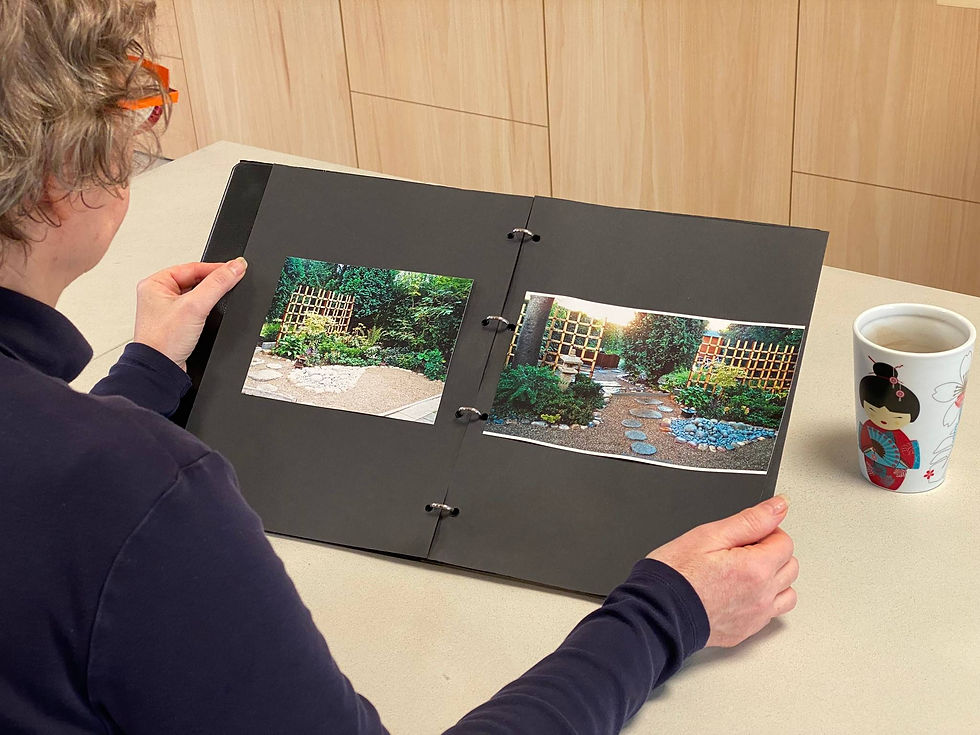The abandoned dream, I rerouted | My Ikebana Story #5
- Ilse Beunen
- Feb 20
- 3 min read
Updated: 6 days ago
I was clearing out a storage space, knee-deep in the remnants of past ambitions, when I found it—an old picture portfolio filled with some of my Japanese garden designs in Belgium. As I flipped through the pages, memories of my early dreams unfolded before me.
This was my grand vision upon returning from Japan in the year 2000: to bring the quiet elegance of Japanese gardens to Belgium. And yet, here I was, arranging branches in a vase instead.

The Dream and the Struggle
After eleven years in Japan, immersed in the artistry of traditional gardens, I was determined to bring the deeper meaning of Japanese gardens to Belgium. The idea seemed logical, even poetic—a continuation of my journey.
And indeed, there were moments of triumph: my work graces corporate spaces like Soudal, a hotel garden and private sanctuaries. But even as I completed these projects, the journey was filled with challenges—logistical hurdles, skeptical clients, and an industry that didn’t always value the artistry behind the work.

One of My Japanese Gardens Designs at a Hotel in Belgium
Clients often saw Japanese gardens as an aesthetic, a series of neatly placed stones and delicate maples, rather than a philosophy of balance and imperfection. Many had visited Japan, returned inspired, and attempted to construct their own garden before calling me in to ‘fix’ the final details. More often than not, my professional advice was: start over. Not exactly a client-pleaser.

And then, there was the industry itself. In Belgium, garden design was not valued separately from construction—people expected the design to come packaged with the build. Add to that the frustration of working within a male-dominated field, where my expertise was often met with polite but unmistakable skepticism. The battle for recognition was exhausting.
Gradually, without any fanfare or conscious decision, I found myself turning more and more to ikebana. Initially, it was a side endeavor, a creative release from the challenges of garden construction. Unlike gardens, ikebana was entirely mine—I controlled the process from start to finish. There were no suppliers delivering the wrong stones, no clients second-guessing placements, no need to justify my credentials.

Requests for ikebana projects began trickling in, and then, before I even noticed, the trickle became a steady stream. I was still designing gardens—about two a year—but ikebana was quietly taking center stage until there was only ikebana.

Ben once told me that he never understood how effortlessly I transitioned from Japanese gardens to ikebana—until years later. And when he shared his theory with me, I had to admit… he had a point. Next week, I’ll explain his theory and why the transition wasn’t a transition at all.
Some things I learned on my way:
Never stand still. For anyone feeling lost in their creative path, my advice is this: keep moving forward. If you don’t know exactly what you want yet, just keep moving. Every step, every project teaches you something, and clarity comes from action, not from waiting.

And if you find something that works well, consider doing it again—perhaps even ten times more. And if it still works, keep going. Before even thinking of doing something new. If you want to make a career and earn some money, there has to be some repetition of successful things.

'When you do something, you are not doing something else.' In other words: Focus! We all have limited time and energy, instead of scattering efforts in too many directions, channeling energy into what truly matters will bring you closer to your goals.

コメント